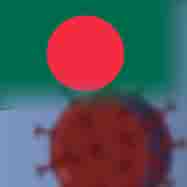India Bangladesh Ties On The Upswing
Research Fellow Manohar Parrikar IDSA Dr. Smruti Pattanaik’s article ‘India Bangladesh Ties on The Upswing’ has been published by the All India Radio (AIR) World Service, an External Services Division of AIR, on August 21, 2020.
The relationship has been defined as ‘shonali adhyay’ (golden age) by Prime Minister Narendra Modi and is held as a ‘role model in the region’ by External Affairs Minister Dr. S Jaishankar. This sentiment has been reciprocated too by Bangladesh Foreign Minister AK Abdul Momen who defined Bangladesh’s ties with India are historic, rock-solid and as blood relation, writes Dr. Pattanaik.








